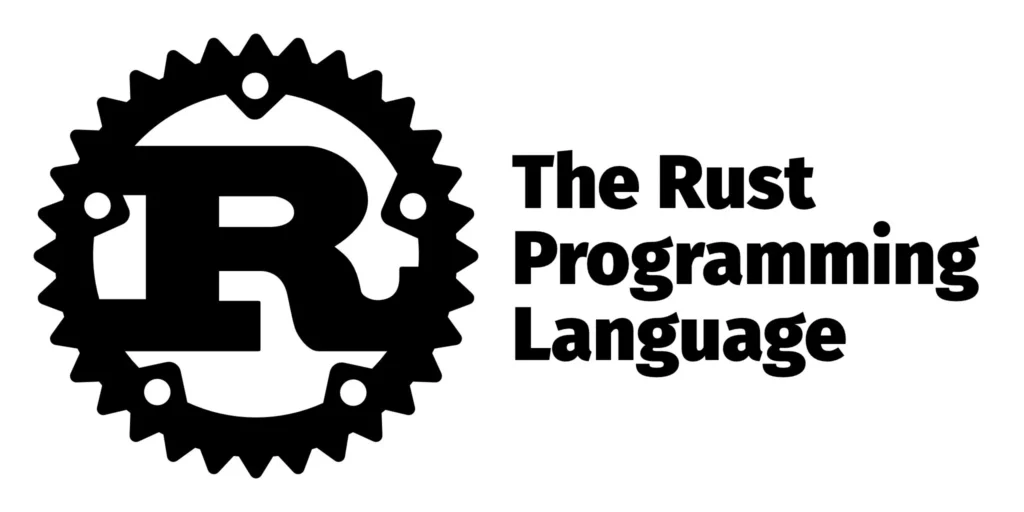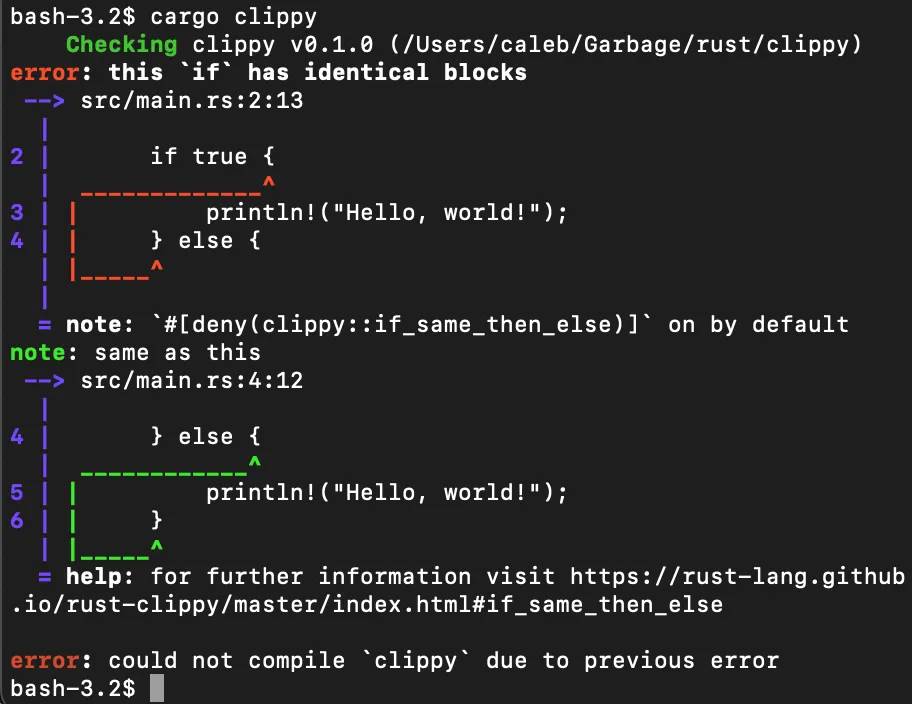People often ask “what is Rust programming language.” Rust is a new, high-level and performance-oriented, safe language. Mozilla (first introduced in 2010) developed it as a more practical and safe alternative to C and C++. Rust is compiled and is a statically typed language. Its major objective is to remove popular bugs (such as buffer overflows or null pointer dereferences) at compile time via strong safety. The Rust site goes as far as referring to it as a language that gives everyone the power to create reliable and efficient software. In practice Rust code can implement memory management without a garbage collector. This is possible due to an ownership model, allowing high performance on par with C/C++. Indicatively, one Rust tutorial observes that its ownership system makes memory safety and requires no GC.
The design of Rust makes it applicable in numerous applications. According to official documentation, Rust is blazingly fast and memory-efficient with no garbage collector. It can thus serve performance-sensitive services and be embedded in devices with low resources. It is also memory and thread safe through its rich type and ownership system. To the point, Rust is a general-purpose, speed-oriented, concurrent, and safety-oriented language. It has a wide variety of programming paradigms (such as imperative, functional and concurrent) and is provided with modern tooling (such as Cargo) and documentation that make writing complex software more predictable.

Why Was Rust Created?
Rust began as a personal project by Mozilla engineer Graydon Hoare around 2010. The motivation was to fix real problems in existing system software. Early Rust slides note that Firefox’s C++ code had many security issues and that writing multithreaded code in C++ was error-prone. In other words, Mozilla needed a language that could replace parts of Firefox with safer code.
Rust was created to meet this need. By using strict compile-time checks, Rust eliminates entire classes of bugs (for example, use-after-free or data races). Over time the project grew into a full language and ecosystem. It was officially sponsored by Mozilla but is now maintained by the community and the Rust Foundation. Today, the original reason remains: Rust provides the low-level control of C/C++ while preventing many memory and concurrency bugs, making it a safer choice for modern system programming.
Core Features That Make Rust Different
Rust has several core features that set it apart:
Memory Safety
The ownership system and rich type system of Rust make it memory safe without a garbage collector. Rust eliminates null pointers, dangling references, and data races by enforcing the concept of ownership of data at compile time. These problems are spotted by its compiler. This leads to a large number of runtime bugs being transformed into compile-time bugs in Rust. This architecture (commonly referred to as fearless concurrency) implies that the developers create safe concurrent code. This eases the worry that subtle bugs will creep into production.
Zero-Cost Abstraction
Rust offers high-level abstractions (such as generics, iterators and trait-based polymorphism) at no runtime cost. That is, zero-cost abstractions implies that abstract, safe Rust code will compile to the same efficient machine code as low-level hand-written code. As an example, iterators and closures in Rust do not add any additional overhead to handwritten loops. A summary of the strengths of Rust observes that due to these zero-cost abstractions, Rust gives you the option to squeeze out the final bit of performance of the code.
Ownership Model
At the heart of Rust is its ownership and borrowing model. Each value has a single owner, and Rust enforces rules about borrowing and lifetimes of references. This model makes memory management explicit and safe. Unlike languages with garbage collection or manual memory management, Rust’s compiler checks at compile time that references do not outlive the data they point to, preventing use-after-free and data races. In practice, this means Rust programmers don’t manually free memory and still avoid memory leaks and bugs. The official documentation emphasizes that Rust’s “ownership model guarantee[s] memory-safety and thread-safety — enabling you to eliminate many classes of bugs at compile-time.”.
High Performance
Rust is supposed to be as fast as C and C++. It does not have any hidden runtimes, no garbage collection pauses and it provides developers with fine-grained control over memory and performance. Its code is compiled in advance to native machine code. As an illustration, the Rust site refers to Rust as being blazingly fast and memory-efficient. Rust code is usually run at a comparably fast speed on benchmark tests to optimized C code. This renders Rust suitable in areas of performance-sensitive tasks such as game engine, simulation, and low-level systems. In fact, according to the summaries of the advantages of Rust, it is as fast as C/C++ because of zero-cost abstractions and has no runtime cost, thus being ideal in the development of an operating system or embedded system.
Concurrency
Rust provides support of concurrent and parallel programming in a safe manner. Its type system (including such characteristics as Send and Sync) and ownership regulations preclude data races during the compilation time. The standard library of the language has threads, channels, and concurrency with async/await. Even the Rust book has a chapter titled Fearless Concurrency, which states that concurrent bugs (such as data races) are virtually impossible with Rust since its compile-time checks detect them. This allows developers to code in multithreaded code without the fear of difficult-to-detect bugs, and this is why Rust is frequently used in high-concurrency services and network servers.
Cross-Platform
The Rust programming language is compiled to various platforms. It supports Windows, Linux, and macOS in the first class and can be targeted at WebAssembly (to run in a browser) or embedded systems based on bare metal. As a matter of fact, one source states that Rust is a cross-platform programming language, and can be used on a very large number of platforms, such as Windows, macOS, Linux, and even embedded systems. It implies that the same Rust code can be frequently compiled to desktop, server, mobile, embedded, or WebAssembly with minimal or no modifications. Targeting other architectures is made easy by its build tool (Cargo). Other ecosystems, which rely on Rust, include libraries to develop cross-platform GUI and platform-specific binding. On the whole, Rust can be used in various settings: cloud servers, IoT devices, and so on.

Rust has a rich ecosystem of tools, libraries, and documentation. Key parts include:
Cargo – Build & Package Manager
Cargo is an inbuilt tool of building projects and managing dependencies in Rust. Each Rust project is expected to contain a Cargo.toml file which contains a list of dependencies. The downloading and construction of those libraries is done automatically by cargo. Rust, as the official site boasts, is packaged with an inbuilt package manager and a build tool. Cargo also helps in testing, benchmarking and publishing crates. This single tooling highly increases the productivity of developers. To illustrate, to add a library such as serde (JSON) to a project, all one has to do is add a line to Cargo.toml and run cargo build.
Crates.io – Package Registry
Crates.io is Rust’s central repository for libraries (called “crates”). It hosts reusable Rust packages contributed by the community. Crates.io has grown rapidly; by late 2021 it already surpassed 100,000 published crates. (For comparison, hugely popular ecosystems like npm or PyPI have on the order of millions of packages, but 100,000 still indicates a healthy ecosystem.) Examples of popular crates include tokio (async runtime), serde (serialization), and many others for everything from GUI frameworks to cryptography. The large number of crates shows that Rust has many available libraries to solve common tasks, and the count continues to grow. The fact that “crates.io has reached 100,000 crates” was even celebrated in the Rust community as “a big milestone indicating Rust’s popularity and maturity”.
Documentation and Community (The Rust Book, etc.)
Rust has a good reputation for documentation. The most important guide is Rust Programming Language (also known as the Rust Book) that is free to read online. The official site of Rust boasts of the fact that we love documentation and provides a link to this book as one of the main sources of learning. Besides the book, it has an extensive standard library reference, other community-written guides and a blog. Rust has an active community, consisting of forums (users), official chat (Discord, Zulip), and conferences. Development is also coordinated by the Rust Foundation. Newcomers can easily learn Rust, and teams can adopt Rust due to this robust documentation and community support.
Adoption in Industry
The Rust site states that hundreds of companies worldwide are using Rust in production today to have fast, low-resource, cross-platform solutions. Major brands are Microsoft, Dropbox, Cloudflare, Amazon, Mozilla, Discord, Facebook, etc. As an example, the elements of Firefox and the services of Cloudflare are coded in Rust. The Linux kernel has gone further to support the writing of drivers in Rust. This practically implies that Rust is tested at scale. This business support and use also encourages the study of Rust and promise the ecosystem (libraries, tools) to expand.

What Is Rust Used For? Real-World Applications
Rust’s safety and performance make it suitable for many domains. Some prominent real-world uses include:
System Programming
Rust is better in areas that C/C++ has been used to perform. This consists of operating systems, device drivers, embedded firmware and networking infrastructure. As an example, Redox OS is a complete Unix-like operating system written in Rust. Rust is starting to be used in the Linux kernel as new drivers. In low-level software such as Tock OS (an embedded microcontroller-based OS), rust is also used. Rust is used in performance-sensitive parts of companies; an example is Firecracker (a serverless computing microVM) by Amazon, which is written in Rust. Overall, Rust is a competitor where you require low-level control, high speed and high safety.
Web Development
Rust is becoming popular in web backend and WebAssembly. Rust web frameworks such as Actix-Web, Rocket and Axum enable web services to be developed on the backend. It is worth noting that Cloudflare has been using Rust in its infrastructure, and Amazon has been using Rust to provide web services (e.g. Firecracker). On the frontend, Rust is also capable of compiling to WebAssembly (Wasm) which can run in the browser. Frameworks such as Yew or Seed allow developers to write Rust code to build dynamic web-interfaces. Rust+Wasm is applied to client-side applications and even games. As mentioned in one source, Rust is among the most supported languages to compile to WebAssembly, and it allows high-performance browser applications.
Game Development
The Rust programming language is also appealing to game engines and graphics due to its performance and its safety with regards to memory. There are a number of Rust game engines and libraries (e.g. Bevy, Amethyst, Piston). Engines such as Piston or Amethyst can be used to create an entire game using Rust as the primary systems language. Rust games enjoy the speed of the language, and they do not contain typical bugs (no buffer overflow or memory leakage). As an example, small studios and indie games are considering Rust as a game development tool. Although the ecosystem is younger than, e.g., C++ game libraries, it is maturing and the similarity of Rust to C++ makes it an easy fit as a low-level game logic.
Blockchain and Crypto
Rust has become a popular language in blockchain development. Key projects like Solana and Polkadot are built with Rust. For example, Polkadot’s framework Substrate is a Rust library for building custom blockchains. One report notes that Rust developers are the “second fastest-growing crypto role (+39%)” thanks to Rust’s use in Solana and Polkadot ecosystems. Rust’s memory safety and performance suit high-throughput blockchain systems. In the crypto community, Rust is often chosen for smart contract platforms, consensus engines, and wallet/validator software.
Embedded and IoT Systems
The low-level control and no-std support of Rust make it the perfect choice when developing an embedded device or an IoT firmware. It offers safety assurances in places where insects are extremely expensive. Rust is a language used by developers to create microcontroller firmware and sensor modules among other constrained hardware. An example is embedded frameworks such as Tock (a microcontroller OS written in Rust), and the hardware interface crates of the Rust ecosystem. Rust in embedded applications also implies reduced runtime crashes and no garbage collection, which is essential in small machines.
Other Domains (Security, CLI tools, etc.)
The properties of rust give it to most other fields. It is used in security tools (e.g. the Nmap alternative RustScan, or the PGP implementation Sequoia PGP), high-performance command line tools (such as the ripgrep search tool and the Alacritty terminal emulator), or even in scientific computing or machine learning (such as the Polars DataFrame library or the Burn ML framework). In both instances, it is due to the speed, safety, and modern syntax of Rust.
Advantages and Disadvantages of Rust
Advantages
Rust’s main strengths include its memory safety and concurrency safety with no garbage collector, its high performance, and its modern toolchain. Its strict compiler checks catch many bugs early. The tooling (Cargo, rustfmt, clippy) and documentation make development productive. As Rust’s promoters say, developers get “efficient software” that is also “reliable”.
In practice, surveys and industry reports show Rust is often ranked highly for salary and developer satisfaction (it’s one of the highest-paying languages and has been the “most loved” language on developer surveys). Rust’s ecosystem is also growing: as one article notes, Rust developers have seen significant growth, and Rust is among the top languages in AI/ML and high-earning fields. In short, Rust offers C-like control with fewer bugs, which is a powerful advantage for system-level work and beyond.
Disadvantages
No language is perfect. The primary limitations to Rust are its high learning curve and slow compile time. Its rigid ownership policy can make novices spend some time to learn idiomatic Rust. One of them quotes Rust as a challenging language to learn because it is complex and it usually takes many months before a programmer can feel comfortable with it. Code writing may be slower since the compiler will impose restrictions that identify problems during an earlier stage. By the way, compilation Rust crates (compilation units) can be large, which means that it can take more time to build projects than in some other languages.
The second problem is that Rust has a young library ecosystem, and thus the language is still developing. Even though crates.io offers a considerable number of packages, certain highly niche areas might lack a pre-existing crate, in contrast to more established languages. According to one of the resources, Rust is a young technology, so some libraries may not be available yet, but it also states that the crates library has been expanding at a rapid pace. Lastly, the strictness of Rust can be inconveniencing: the compiler will not even compile a program unless it satisfies all the requirements (such as the rules of borrowing). This is a safety design (rigidity) which might increase the difficulty of quick prototyping.

Rust vs Other Programming Languages
Rust is often compared with older or contemporary languages. The table below highlights some differences between Rust, C++, Go, and Python:
| Feature | Rust | C++ | Go | Python |
| Memory Safety | Yes – enforced by ownership rules (no garbage collector) | No – manual memory management (pointers can be unsafe) | Yes – garbage-collected (no null deref) | Yes – garbage-collected, high-level |
| Performance | Very high (comparable to C/C++; zero-cost abstractions) | Very high (C++ is known for speed) | High (native code, but with GC overhead) | Moderate (interpreted; slower) |
| Concurrency | Strong – fearless concurrency (compile-time checks prevent data races) | Hard – threads exist but data races common | Easy – goroutines and channels (built-in) | Weak – Global Interpreter Lock (GIL) limits threads |
| Ease of Learning | Steep – strict rules mean longer learning time | Steep – complex features and undefined behaviors | Easy – simple syntax, fewer features | Easy – dynamic, very high-level |
| Safety | Memory-/thread-safe by default | Unsafe by default (buffer overflows, etc.) | Memory-safe (GC) but no generics until recently | High-level safety (but runtime errors possible) |
| Use Cases | System software, web backends, embedded, games | System, games, desktop, etc. | Cloud services, network tools, web | Web, scripting, data science, ML |
| Tooling/Ecosystem | Modern (Cargo, crates.io, strong docs) | Vast (older ecosystem, many libraries) | Growing (standard library good) | Extensive (many libraries, frameworks) |
| Learning Curve | High – Rust is complex (months to master) | High – longstanding but complex | Low – simple syntax, fast compile | Low – very popular for beginners |

FAQs about Rust Programming Language
Is Rust a Dying Language?
No. Rust is actively growing in popularity and use. Contrary to that rumor, Rust consistently ranks as one of the most loved languages in developer surveys. For instance, the 2024 Stack Overflow survey found Rust to be the “most admired programming language” for the second year in a row, with an 83% approval rating among developers.
Use of Rust at work is also rising. The 2024 State of Rust Survey reported that 53% of Rust users use it daily or nearly daily, up 4 points from the previous year.. The percentage of users who feel productive in Rust also rose from 47% to 53% year-over-year. Major tech players continue to invest in Rust (Linux kernel support, large companies adopting it), and the community and tooling keep expanding. All evidence points to Rust being very much alive and in demand – it’s not a dying language, but rather a “sustainable, forward-looking solution” for many problems.
What Is the Salary of a Rust Developer?
Rust developers are generally well-compensated. For example, the Stack Overflow 2024 Developer Survey reports that Rust programmers have a median salary around $76,300 per year. This is higher than many other language communities. (For context, survey data showed languages like Java and JavaScript had lower median salaries.) Another analysis notes the international median for Rust devs was about $87,000 in 2023, which is in line with senior software engineer rates in tech. Of course, salaries vary by location, experience, and industry, but overall Rust skills tend to be rewarded due to the language’s specialized nature and performance benefits.
Should I Learn Rust?
Rust is popular and advantageous to many developers because of its advantages. It is a language to learn in case your projects require high performance, low-level control, or even safety. Additionally, Rust knowledge is appreciated in such industries as systems programming, blockchain, and cloud infrastructure. Nevertheless, note that Rust is harder to learn than other simpler languages, hence new developers must be patient. In a word, yes – in most cases, learning Rust can be of great value, provided that you are willing to make the first effort to learn its concepts.
Why Use Rust Programming Language?
The combination of safety and speed is commonly preferred with Rust. It removes numerous bugs during compile time (making it more reliable code), but is also fast. The model of its concurrency provides developers with the confidence to write multithreaded applications. The ecosystem (Cargo) and developing community of Rust also render development efficient. Concisely, Rust is the language to use when safe systems code and high performance are required: it allows writing reliable, high-performance software.
Is Rust Hard to Learn?
Rust’s unique features mean it takes time to learn. Its learning curve is generally considered high. Programmers coming from high-level languages may struggle at first with concepts like ownership and lifetimes. One write-up warns that “your software won’t compile unless all the conditions are met,” emphasizing that Rust demands rigor. In practice, many find that becoming comfortable with Rust requires months of practice. However, the compiler’s helpful error messages and the supportive community make the process smoother. Once learned, many developers appreciate the clarity and confidence Rust provides.
What Makes Rust Different?
The primary differentiator of Rust is its ownership and type system, which imposes no-cost safety. This is contrary to the majority of languages. Also, Rust offers zero-cost abstractions, such that high-level code is as efficient as low-level code. It is also highly-toolled by default, and cross-platform oriented at Rust. All these set Rust apart.
What Are the Disadvantages of Rust?
As mentioned in the discussion, the drawbacks of using Rust are a higher learning curve and increased compile times. It also lacks libraries compared to other older languages (although its crates are increasing). Lastly, the Rust programming language is very strict and it can reduce the speed of development. However, there are the benefits of these trade-offs: safer and faster code. These drawbacks have to be weighed by the teams against the benefits of Rust depending on the needs of a project.
Conclusion
Rust is a safe and powerful language that was developed to address the shortcomings of C/C++. It applies to systems, web services, games, blockchain and embedded systems. Its main characteristics such as memory safety, zero-cost abstractions, strong concurrency and cross-platform support make it unique. Although it requires effort to learn, Rust can overcome the limitations and maintain its benefits in terms of reliability and performance. Recent statistics and the industry application indicate that Rust is not dying, it is increasing and highly paid. Due to these reasons, Rust is a modern and popular programming language with a promising future..
We have already been witnessing the transformation of Rust in business in terms of building safe and high-performance software at Designveloper. Being one of the top web and software development firms with headquarters in Vietnam, we take pride in the fact that we embrace the latest, productive technologies that lead to actual outcomes of our clients- and Rust is no exception.
Having 10 years of experience in providing high-quality digital solutions to various sectors, such as fintech, healthcare, and e-commerce, we are constantly assessing tools that would be both fast and stable. Rust is memory safe, concurrent, and has zero-cost abstractions, which makes it a good choice to use in performance-sensitive applications. That is why we began to incorporate Rust into some of our backend modules and system components of our different projects.


